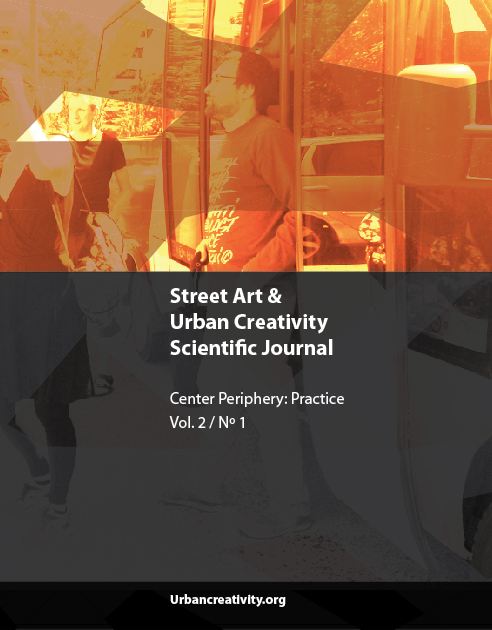Hijacking Banksy
using a contemporary art mystery to increase academic readership
DOI:
https://doi.org/10.25765/sauc.v2i1.45Abstract
In this article I examine the methodological and ethical rigor of a geographic profiling study and resulting article, published in 2016 in Journal of Spatial Science, which identifies by name a candidate for being the artist known as Banksy. I demonstrate that the article is characterized by a number of methodological flaws which fundamentally undermine the researchers’ basis for determining Banksy’s identity. On this background I argue that the researchers’ decision to include a specific name in the article is ethically problematic and I suggest that the main purpose for the inclusion has likely been to attract attention to the study. I further propose that the sensationalist approach to increasing academic readership exemplified by the inclusion of a specific name in the article without solid empirical evidence to back it up may adversely affect researchers who continue to work within the field of street art studies.
Downloads
Global Statistics ℹ️
|
169
Views
|
47
Downloads
|
|
216
Total
|
|
Downloads
Published
How to Cite
Issue
Section
License
Copyright (c) 2016 Street Art & Urban Creativity

This work is licensed under a Creative Commons Attribution-NoDerivatives 4.0 International License.
Those authors who publish in this journal accept the following terms:
-
Authors retain copyright.
-
Authors transfer to the journal the right of first publication. The journal also owns the publishing rights.
-
All published contents are governed by an Attribution-NoDerivatives 4.0 International License.
Access the informative version and legal text of the license. By virtue of this, third parties are allowed to use what is published as long as they mention the authorship of the work and the first publication in this journal. If you transform the material, you may not distribute the modified work. -
Authors may make other independent and additional contractual arrangements for non-exclusive distribution of the version of the article published in this journal (e.g., inclusion in an institutional repository or publication in a book) as long as they clearly indicate that the work was first published in this journal.
- Authors are allowed and recommended to publish their work on the Internet (for example on institutional and personal websites), following the publication of, and referencing the journal, as this could lead to constructive exchanges and a more extensive and quick circulation of published works (see The Effect of Open Access).













